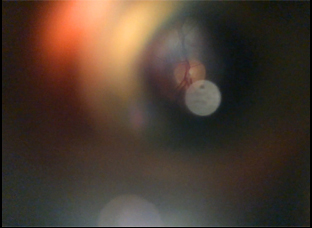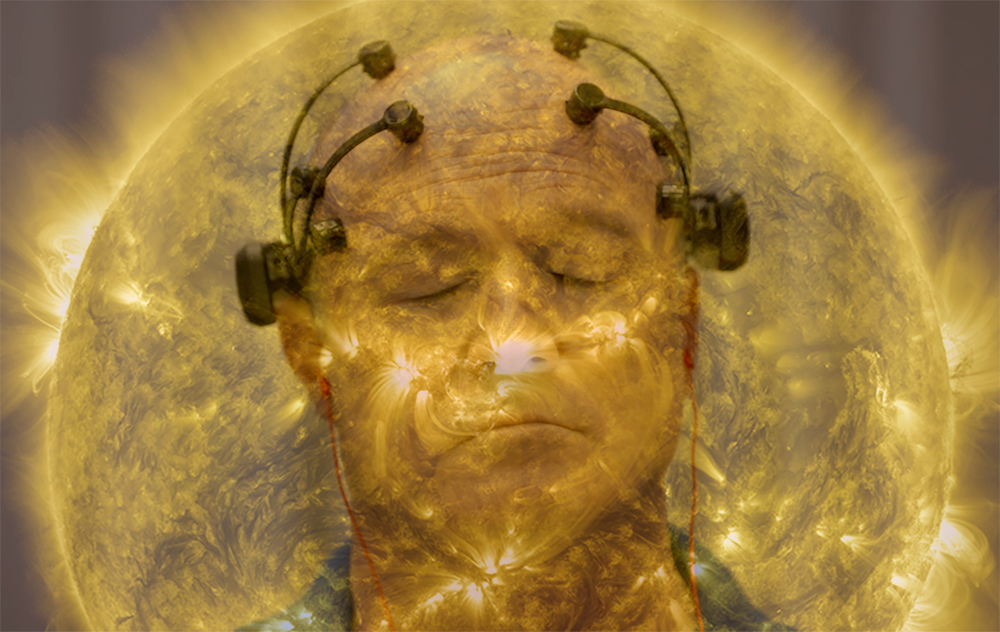One of the odd jobs Theo Anthony once had was to shoot pictures for a fashion magazine where he could expect to be one of a few dozen photographers sitting inside a pit at the end of runway shows, naturally disenchanted by the jostling amongst the sweat-drenched group to take the same shot.
“There was a point in my career where I was going and I was covering these different journalistic events and I realized that everyone was taking the same photo and jockeying for the same position,” recalls Anthony. “Very early on, I had a strategy whenever I saw this clustering phenomenon happen, to actually use that moment and automatically turn around and face and look at how people were looking at things.”
You come away seeing things differently after one of Anthony’s films, though remarkably it’s not necessarily because he’s looking in a different direction than most, but what he’s seeing is something entirely different. His engrossing debut “Rat Film” starts innocently enough as a look at vermin infestation in Baltimore before digging into the racial and political underpinnings that has made the issue more prevalent in some neighborhoods than others, and his follow-up “Subject to Review,” a consideration of instant replay in tennis where the ability to bring technical precision to a sport that’s long relied on human eyes threatens to change the game itself. The filmmaker has outdone himself with “All Light, Everywhere,” a true recalibration of the senses in which he finds himself in the headquarters of Axon, which has expanded its business furnishing tasers to law enforcement into body cameras intended to monitor police activity in the event of malpractice.
Yet while Anthony exposes the limits of what this technology can capture — and actually obscure — “All Light, Everywhere” expands its scope to include a police training session about the application of the cameras, a visit to Persistent Surveillance Systems, an aerial surveillance company retained by the City of Baltimore, raucous community meetings and a solar eclipse, all in the service of expressing that while it’s naturally understood that our own vision is subject to personal biases, it’s been built into the technology that we’ve been made to believe is impartial when it’s thought to operate autonomously. Anthony doesn’t leave himself out of such scrutiny, acknowledging his presence as the arbiter of what’s important enough to record and what he’s decided to leave in and out of the narrative as a whole, but even if he suggests he isn’t to be trusted any more behind the camera than anyone else, he builds an extraordinarily convincing case for how images are weaponized, with attitudes towards race long shaped and reinforced by paintings and photography and the development of movie cameras paralleling that of guns.
A winner of a Special Jury Prize at Sundance earlier this year, “All Light, Everywhere” starts its theatrical run this week in New York and Los Angeles with more cities to come this summer and on the eve of the release of a film that will inspire so many conversations, Anthony was gracious enough to have one with us about how he brought together so many compelling storylines into such a timely film, keeping a human touch throughout and how his interest in the subjects he’s explored have extended beyond the production.

It’s definitely the former. The key to my films is I’m really not an expert in any of this when I start and not even when I finish. When I dive into a topic whether it’s urbanism with “Rat Film” or tennis and replay with “Subject to Review” or cinema history and surveillance in “All Light, Everywhere,” I’m really learning these things as I go along, so my perspective as a filmmaker and as an artist is always one of curiosity and a desire to bring audiences along in that journey learn with me as I put the pieces together, but also leave enough space for them to have maybe different interpretations than my own.
I have topics, like the body camera stuff that I stumble upon [in “All Light, Everywhere”], for instance, and I maybe immediately have an essential image that I know I want to capture with that theme, but I don’t have a prescribed map. I’m always visualizing different connections. I love drawing maps and I love writing and rewriting, but the map’s always changing and growing, shrinking, things are getting cut off and things are getting added in. The goal is really to remain open and curious to let the map be an unstable material at all times. it’s really embracing that.
You actually don’t include body cam footage in the film. How did that decision come about?
With body camera footage, there’s a very particular image of police violence that’s associated with that that we wanted to show [where] there’s a much more nuanced, much more systemic version of a violent act that is happening outside the frame. In order to focus on that, we had to really just not focus on the most obvious violent image. We also had the rule that I just don’t think retraumatizing audiences is necessarily the best way to raise awareness or the best way to educate people about these types of histories. You just end up blinding them to the more softer, subtle ways that power functions.
When your subject is about the limits of seeing, were you more conscious of presentation?
Yeah, every single scene had particular unique rules to it that were always designed in conversation with the scene that was being filmed. For instance, in the police classroom, my cinematographer Corey Hughes and I had a very specific rule that we were only going to be shooting on tripods, only with very long parafocal lenses that had these robotic mechanical zooms that just felt very intrusive. For the Axon sections, we used this Movi gimbal system, which is this automated system that has these motors that never work well — it’s this $10,000 device that’s like a motorized steadicam essentially, but you have to get it calibrated right and we didn’t get it calibrated right — so we had this giant expensive thing to erase our footsteps and it actually ended up just translating our footsteps but very smoothly. [laughs] Rather than futz around with it even more, we embraced that and [thought] that’s actually really perfect that this human touch is being translated to this vulgar digital object.
But we wanted the Axon team to feel this anxious drone floating around that was always kind of chasing Steve, but then you see where the camera gets bored with Steve [Tuttle, the company’s spokesperson] and goes off in a different direction. [laughs] That’s a tactic that we sometimes used. Then finally with the classroom scenes, we made a rule that it was going to all be handheld [and the camera] was always going to be passed around, that it wasn’t going to be a single author behind the camera. There’s just unfortunately so rarely a conversation about craft [in documentary]. When people write about a narrative film, they talk about cinematography or the way the camera is interacting with the actors, but documentarians are thinking about this stuff all the time, and we certainly were with how we designed our shoot.
You just touched on something that may be natural to you, but throughout you’re finding ways to apply a human dimension to the use of technology – I’m thinking of what may be my favorite moment in the film when you ask Ross McNutt, the aerial surveillance guy, if he thinks he’s seeing what God does. Was it conscious to figure out ways to bring that into this throughout?
Yeah, I’m always interested in the way that humans are abstracted into systems for the agenda of power, [like] with “Rat Film,” how is someone living in a particular narrative rendered on a map that may affect their future possibilities. That’s a very reductive statement, but it’s something I’m really interested in and there’s that moment where technology is so good at abstracting us and making us forget that there’s a human on either side, that either we’re looking at a human or that a human is operating the tool, so I’m always looking for those moments to reconnect. When Ross says, “You see that little pixel there, that’s a person,” I think it’s really important to say that’s not just a pixel, that’s a person who is having a good or a bad day, maybe they’re walking to their mom’s house or getting lunch. the representations of humans in those systems are always things that I’m leaning towards. There’s that moment “The Third Man” where Orson Welles is on the ferris wheel and he looks down and he’s like, “See those dots? What would you feel if one of them stopped moving?” And he’s pointing down at the pier. I was thinking a lot about that moment with the PSS scenes.
Were there any directions you may not have anticipated this taking, but you could get excited by?
Yeah, we were always coming up with our own toy models of how it all fit together and things were always exploding it apart. We’d have to put it back together, right up until the final cut. We turned a version into Sundance that had [an excised storyline that’s referenced at the end of the film] still woven in and over the course of revising our submission to Sundance, we removed all of the students and then put them back in again and took them all out again. The way language rhymes across history is always just endlessly fascinating to me [as well] and makes me feel like we’re so advanced in this conversation, but we’re really having the same conversation since the beginning. I’m also trying to stay open to when things don’t work. The community meeting was an excellent example of that where we had something that was too neat and I wasn’t in the film at all and here’s this moment that was really unplanned and it really was a moment that broke open the whole film where we were implicated in the imagemaking process in the same way that we were implicating Ross or Steve or any of these people behind the camera.

We love the good, long crossfade, we’re trying to bring the ‘70s super-long crossfades back. [laughs] I don’t know, but I’ve always been really interested in synchronicity and the way that different interpretations of the same event can sit besides each other and not necessarily contradict each other, but complete the picture. We were always thinking of this idea in opposition to the eye of God that’s so often hawked by these surveillance or policing companies of this composite gaze — this recognition that the way in which we always see the world is always made up and sits along the way other people are seeing the world. We have to make room for all these different interpretations and how they form our own gaze and perspective as well, so just formally speaking, I thought the layering and compositing was a nice way of incorporating that idea, but I also love the way it abstracts the image where it’s this thing you thought was really clear [but] a single face all of a sudden becomes a map, it becomes a body camera, it becomes all this stuff and you’re seeing something, but that interpretation is subverted at the last moment and you can’t quite get to the one transcendent truth of it.
Is it true since production you’ve actually gotten involved in drafting public policy involving body cameras?
I’m based in upstate New York these days, so I’ve actually been involved in some organizing efforts here in Hudson, starting last summer. We’re at the one-year anniversary of the murder of George Floyd and I wrote to the mayor of Hudson, expressing some of my concerns about their body camera policy and he asked me to be on a police accountability committee, so for seven months, I met with police officers and citizens and we came together and drafted a series of policy reforms [concerning body cameras and use of force] that were ultimately accepted, which is really exciting.
We’re obviously living in really intense crisis times right now, [which] coincides with this moment when people feel alienated from the political process, so I think that a lot of that energy gets placed on culture and the arts and [while I think] the arts has a way of shaping policy in a real way, we’re really limiting our idea of what art can be if we are also placing the burden of a political agenda on our art, so what I’m really interested in is how I can make a work or be involved in an artistic process that explores these themes that is liberated to go these places, to propose possibilities that I can further explore outside of the film. I don’t think the film has to do everything. It sits in conversation with lots of other stuff you can do and I’m a lot happier going, “I can do this stuff outside of my film.” I feel a lot more at peace with making the films that I want to make.
“All Light, Everywhere” opens on June 4th in Los Angeles at the Landmark and New York at the IFC Center. A full list of theaters can be found here.




